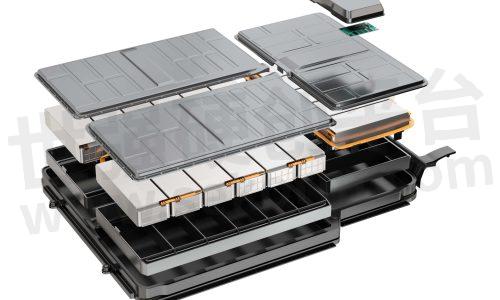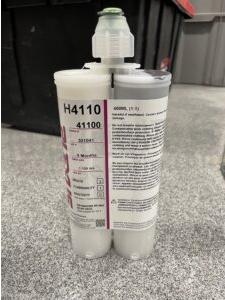Use of Adhesives in an EV Battery


Introduction to the Role of EV Battery Adhesives
The use of adhesives in batteries for electric vehicles is a rapidly growing area of research and development. As electric vehicles continue to gain popularity, battery technology is being pushed towards higher energy density, faster charging times, and lower weight. Additionally, batteries are increasingly important components in the vehicle structure. Adhesives play a crucial role in the design and manufacturing of these batteries, and are used for several applications such as thermal and electrical management, structural integrity, as well as protection of contact points, potting and encapsulation of electronics, as well a battery pack structural bonding, and sealing.

Industrial Adhesive Benefits
One of the primary benefits of using adhesives in battery design is the ability to create a lighter and compact design. Mechanical fasteners such as screws, rivets, or bolts are used create possible leak paths, points of concentrated stress that can lead to fatigue and failure or electrical problems, and cannot easily accommodate assemblies involving dissimilar materials. These issues reduce the overall efficiency and lifespan of the battery.
Adhesives offer a solution to these problems by allowing the battery components to be securely bonded together without the need for mechanical fasteners. This results in a more integrated design, which in turn increases the overall energy density of the battery. Additionally, the use of adhesives can help to improve the structural integrity of the battery, reducing the risk of damage or failure, and improving vehicle performance overall.
Thermal Management
Thermal management is achieved by filling spaces between cells, within the module, and between the module and cooling plate in the battery pack using specially formulated products such as Plexus 2K polyurethanes (PU) modified to provide varying degrees of thermal conductivity. These thermally conductive 2K PUs provide adhesion to battery substrates, and are appropriate for metal-to-metal bonding, including cell-to-cell, cell-to-module, module-to-plate, and cell-to-plate applications.
Epoxy Adhesives, Epoxies, & Silicones
ITW Performance Polymers offers Devcon® epoxy adhesives as well as Insulcast® potting and encapsulation epoxies and silicones. These materials have excellent dielectric properties, volume resistivity, and CLTE properties, in a variety of viscosities and pot life options. Insulcast materials are generally UL94-V0 or V1 and are excellent choices for intra-cell bonding in cylindrical cell applications

Hybrid Adhesive Solutions
Hybrid adhesives like Plexus H4110, Plexus HA1803, and Plexus HA1820 have broad adhesion capabilities, excellent electrical and thermal properties, and can bond metals such as nickel-plated steel, resisting cyclic climate testing and exposure to extreme environments. Hybrid materials also have a combination of mechanical properties that make them an excellent choice for battery pack bonding and sealing.
Conclusion
Structural bonding is the core of the Plexus brand of structural MMAs (acrylic adhesives), and is appropriate for pack bonding and sealing, whether on its own or in concert with mechanical fasteners. Structural bonding of the EV battery pack means that the EV battery distributes mechanical stresses evenly throughout the battery pack, and into the vehicle frame, imparting structural stiffness and reducing fatigue in both the battery pack and the overall vehicle.
Adhesive technology is an important component of EV battery pack manufacturing. ITW Performance Polymers offers a full range of globally available adhesives to meet all critical battery requirements.
- +1 Like
- Add to Favorites
Recommend
- Devcon® Coatings Protect Surfaces from Impact and Reduce Equipment Downtime
- Devcon® Coatings Protect Assets from Harsh Chemical Environments
- Introduction to Devcon® Epoxy Adhesives that Meet the Most Extreme Requirements
- Devcon® DFense Blok® Repairs and Protects Cyclone Pipe Elbow at Aggregate Facility
- Devcon® Titanium Putty & Devcon® Brushable Ceramic Coatings Repair & Protect Pressure Vessel from Corrosion
- Devcon® Putties Repair & Protect Pipe Header from Corrosive Salt Water
- Devcon® Floor Patch™ Resurfacer Protects Flooring from Severe Chemical Attack
- Rubber Repair with Polyurethane Coatings
This document is provided by Sekorm Platform for VIP exclusive service. The copyright is owned by Sekorm. Without authorization, any medias, websites or individual are not allowed to reprint. When authorizing the reprint, the link of www.sekorm.com must be indicated.






























































































































































































































































































































































































































































































































































































































































































































































































































































































